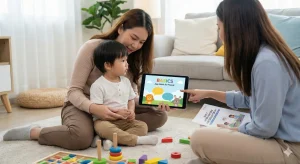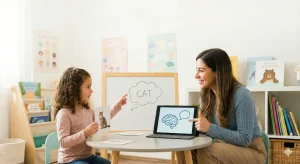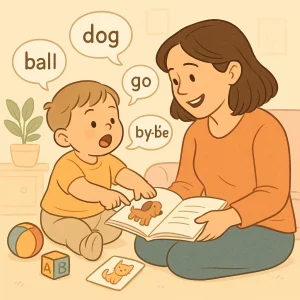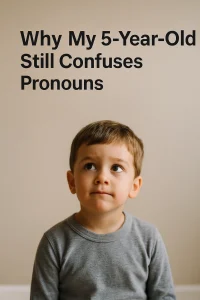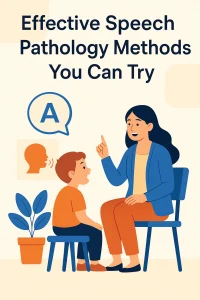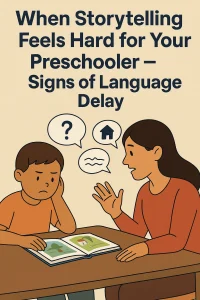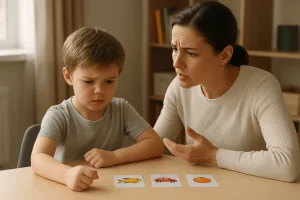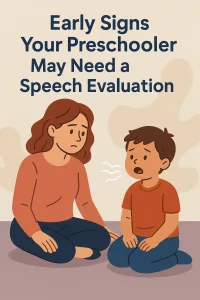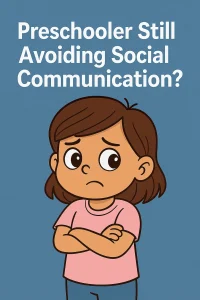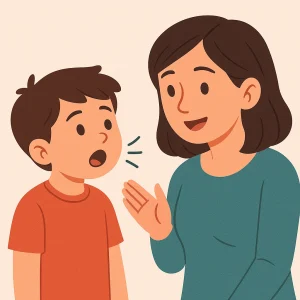Articulation Therapy: Easy Tips to Master S & SH Sounds
Last Updated: May 30, 2024
Welcome to our guide on articulation therapy, where we’ll share practical tips to help your child master the S and SH sounds. These sounds are among the most common challenges in speech therapy, but with the right strategies, you can help your child overcome these hurdles.
Why is articulation therapy important?
Articulation therapy is crucial for developing clear and effective communication skills. Proper pronunciation of sounds like S and SH is essential for children as they grow and interact with others. When children struggle with these sounds, it can affect their confidence and ability to be understood.
Learn more about the different types of articulation disorders and their impacts in our article on Articulation Disorder.
Understanding the S and SH Sounds
Now that we’ve introduced the importance of articulation therapy and the challenges associated with the S and SH sounds let’s dive deeper into understanding how these sounds are produced and the typical age range for mastering them.
How the S sound is produced
The S sound is produced by placing the tip of the tongue close to the roof of the mouth, just behind the front teeth, without touching it. The sides of the tongue touch the back teeth, creating a narrow passage for the air to flow through the middle of the tongue. As the air passes through this narrow gap, it creates the S sound. It’s important to note that the S sound is unvoiced, meaning the vocal cords do not vibrate while making this sound. Think of it like the sound a snake makes when it hisses.
How the SH sound is produced
The SH sound, on the other hand, requires a slightly different tongue and mouth position. To produce the SH sound, raise the tongue high inside the mouth and pull it back so that the sides of the tongue touch the back teeth. The lips should be slightly protruded, almost like making an O shape. There should be a shallow groove in the mid-line of the tongue for the air to pass through. Similar to the S sound, the SH sound is also unvoiced, relying solely on the passage of air to create the sound. It’s like the sound you make when you want someone to be quiet – “shhh.”
Typical age range for mastering these sounds
Children typically learn to produce the S and SH sounds between the ages of 3 and 7. Most children can make these sounds in isolation by around 4 years old. However, using these sounds correctly in words and conversations can take a bit longer. If your child is struggling with these sounds beyond the age of 7, it might be a good idea to seek guidance from a speech-language pathologist.
Understanding the mechanics of how these sounds are produced is the first step in helping your child master them. Next, we’ll explore the common errors children make with these sounds and how you can correct them with effective articulation therapy techniques.
Read more: Mastering the ‘SH’ Sound: Easy Techniques and Tips
Common Errors in S and SH Sound Production
In our journey to perfect the S and SH sounds, it’s important to understand the common errors children make when trying to produce these sounds. Recognizing these errors is the first step toward effective correction.
Typical Errors with the S Sound
- Substituting S with T:
- Example: A child might say “tee” instead of “see.”
- Omitting the S Sound:
- Some children might leave out the S sound altogether in words. For instance, they might say “ee” instead of “see.”
- Distorted S Sound:
- The S sound may be produced but in a distorted manner, making it difficult to understand. This can happen at both the word and sentence levels.
- S Sound Substituted at Different Levels:
- Some children can produce the S sound in isolation but struggle when it comes to using it in words or sentences. For example, they might say “sa” correctly but struggle with “saw” in a sentence.
Typical Errors with the SH Sound
- Substituting SH with CH or T:
- Example: A child might say “soes” instead of “shoes” or “tip” instead of “ship.”
- Omitting the SH Sound:
- Similar to the S sound, the SH sound might be omitted entirely. For instance, a child might say “oes” instead of “shoes.”
- Distorted SH Sound:
- The SH sound may be produced in a way that is unclear or distorted, making it difficult to understand. This can occur at the word level or within sentences.
- SH Sound Substituted at Different Levels:
- Children might produce the SH sound correctly in isolation but struggle with it in words or sentences. For example, they might say “sh” correctly but have difficulty with “shark” in a sentence.
Tips for Teaching the S Sound
Now that we’ve discussed the common errors children make with the S and SH sounds let’s move on to some effective tips for teaching the S sound. These strategies can help your child master the correct pronunciation of the S sound, making the learning process both fun and engaging.
Imitation
- Demonstrate the correct S sound: Start by clearly demonstrating the S sound to your child. Make sure to exaggerate the movement of your tongue and mouth to give them a clear visual cue.
- Encourage imitation: Encourage your child to imitate the sound. You can say “ssss” slowly and clearly and ask them to repeat it after you. Practice this regularly until they can produce the sound correctly.
Visual Cues
Use visual cues like pointing to lips: Visual cues can be very helpful in teaching the S sound. Point to your lips or use a mirror so your child can see how the S sound is produced. This visual feedback helps them understand the correct tongue and lip placement.
Shaping
Use the T sound to shape the S sound: If your child can produce the T sound, use it as a starting point to shape the S sound. Ask them to say “t…t…t” and gradually extend it to “tss…tss…tssss.” Over time, reduce the T sound until they are only producing the S sound.
Hissing Like a Snake
Encourage hissing like a snake: Children often enjoy pretending to be animals. Encourage your child to hiss like a snake by making the “ssss” sound. This playful approach can make practicing the S sound more enjoyable.
Blowing Through a Straw
Practice blowing air through a straw: Blowing air through a straw is a great exercise to help children focus on the airflow needed for the S sound. Have your child hold a straw in the center of their lower lip and blow through it while making the S sound. This activity helps them understand how to control their breath and produce a clear S sound.
Tips for Teaching the SH Sound
Next, we’ll focus on teaching the SH sound. Using these practical techniques, you can help your child effectively learn and practice this sound, making the process both fun and engaging.
Phonetic Placement
Guide correct tongue and lip placement: The SH sound is produced by raising the tongue high inside the mouth and pulling it back so the sides of the tongue touch the back teeth. The lips should be slightly rounded, almost like making an O shape. To guide your child, use a mirror so they can see their tongue and lip movements. Show them how to place their tongue and lips correctly, and have them mimic your actions.
Sequencing
Move from S to SH sound: If your child can already produce the S sound, use it as a starting point to transition to the SH sound. Ask them to start with the S sound and then gradually transition to SH by adding a voiceless Y sound. For example, have them say “sssssshh” by starting with S and moving into SH. This helps them understand the slight change in tongue and lip placement needed for the SH sound.
Using the “Shhh” Symbol
Use the familiar “shhh” gesture: The “shhh” gesture, commonly used to signal quiet, is familiar to most children. Use this gesture as a visual cue to help them practice the SH sound. Put your finger to your lips in the “shhh” gesture and encourage your child to imitate both the gesture and the sound. This familiar context makes it easier for them to produce the SH sound correctly.
Tactile Cues
Feel the air escaping while making the SH sound: When the SH sound is pronounced correctly, a small stream of air escapes from between the lips. Have your child put their hand in front of your mouth while you make the SH sound so they can feel the air. Then, ask them to put their hand in front of their own mouth while they make the sound to ensure they can feel the air stream. This tactile feedback reinforces the correct production of the SH sound.
Fun Activities
Engage in “shh-ing” around the house: Make practicing the SH sound fun by incorporating it into a playful activity. Before naptime or bedtime, walk around the house with your child “shh-ing” different objects: “Shhh, door! Shhh, couch! It’s naptime!” This silly but engaging activity allows your child to practice the SH sound in a fun and relaxed environment, helping them become more comfortable with it.
Moving from Isolation to Conversation
Practice S and SH sounds in syllables, words, sentences, and conversation: Once your child can produce the S and SH sounds in isolation, it’s important to practice these sounds in different contexts. Start with simple syllables (e.g., “sa,” “sha”), then move to words (e.g., “see,” “shoe”), and finally to sentences and conversations. This progression helps your child integrate the sounds into their everyday speech.
Use rotating sentences to reinforce sounds in different word positions: Rotating sentences are a great way to reinforce the S and SH sounds in various word positions. For example, use a sentence like “Shave the _______ with shears” and rotate different words into the blank (e.g., “Shave the sheep with shears,” “Shave the shoe with shears”). This exercise helps your child practice the sounds in different contexts and positions within sentences.
Interactive Exercises and Tools
To make articulation therapy engaging and effective, incorporating interactive exercises and tools can be incredibly helpful. These methods not only keep your child interested but also reinforce the correct pronunciation of the S and SH sounds in a fun and enjoyable way.
Use Apps like Speech BASICS
Speech BASICS is an excellent app designed specifically for speech therapy. It offers a variety of activities and games that target specific speech sounds, including S and SH. The app uses video modeling, where children watch other kids demonstrating sounds, which can be very motivating and relatable for them. The interactive nature of the app helps keep your child engaged while practicing their articulation skills. Plus, the app includes progress tracking, so you can see how your child is improving over time.
Benefits of Speech Basics:
- Engaging and fun activities
- Video modeling with peer examples
- Progress tracking and feedback
- A variety of exercises tailored to different sounds
Incorporate Games like Articulation Bingo
Articulation Bingo:
Articulation Bingo is a fun and interactive way to practice speech sounds. You can create a bingo board with words that include the target sounds (S and SH in this case). Each time your child correctly pronounces a word, they can mark it off on their bingo card. The goal is to get a bingo by completing a row, column, or diagonal on the card. This game adds an element of excitement and challenge to articulation practice, making it a great way to keep your child motivated.
How to Play Articulation Bingo:
- Create or download a bingo board: Fill the board with words that contain the S and SH sounds.
- Cut out the word cards: Place them in a bag or box for your child to draw from.
- Play the game: Have your child pick a word card, pronounce the word correctly, and then mark it on the bingo board.
- Celebrate progress: When your child gets a bingo, celebrate their achievement to reinforce positive behavior and encourage further practice.
Benefits of Articulation Bingo:
- Interactive and engaging
- Reinforces correct pronunciation through repetition
- Adds a fun and competitive element to practice
- It can be customized to focus on specific sounds and word positions.
When to Seek Professional Help
While practicing articulation therapy at home can be highly effective, there are times when seeking professional help is necessary. If you notice that your child is not making significant progress despite consistent practice, it may be time to consult a speech-language pathologist (SLP).
Signs to Consider Professional Help:
- Lack of Progress: If your child is not showing improvement in producing the S and SH sounds after several weeks of practice, it might indicate a need for professional intervention.
- Persistent Errors: When your child consistently makes errors, such as substituting S with T or SH with CH, and self-correction techniques are not working.
- Frustration or Avoidance: If your child becomes increasingly frustrated or begins to avoid speaking due to difficulty with these sounds, professional guidance can help address these emotional barriers.
- Additional Speech Issues: If your child has other speech sound errors or a lateral lisp, it is advisable to seek help early to prevent further complications.
Benefits of Consulting a Speech-Language Pathologist:
- Expert Assessment: An SLP can provide a comprehensive evaluation of your child’s speech and language skills, identifying specific areas of difficulty and creating a tailored therapy plan.
- Targeted Techniques: Professionals use evidence-based techniques and tools to address speech sound disorders effectively, ensuring your child receives the best possible care.
- Progress Monitoring: Regular sessions with an SLP allow for continuous monitoring of your child’s progress, making adjustments to therapy strategies as needed.
- Support and Resources: An SLP can offer valuable resources, support, and guidance for both you and your child, making the journey to clearer speech a collaborative effort.
Also read: How to Know If Your Kid Needs Speech Therapy?
Conclusion
Mastering the S and SH sounds is crucial for clear and effective communication. These sounds are fundamental building blocks in speech. Helping your child perfect them can significantly boost their confidence and ability to be understood. Regular practice is key to success. Use the tips and techniques discussed, such as imitation, visual cues, and interactive tools like Speech BASICS and Articulation Bingo, in your daily routine.
If progress is slow or you encounter persistent challenges, don’t hesitate to seek professional help. Consulting a speech-language pathologist can provide your child with tailored strategies and expert guidance. Explore our articles and services on the Wellness Hub website for more tips and resources on speech therapy and child development. Whether you’re looking for practical advice or professional support, Wellness Hub is here to help you and your child improve speech and communication.
Frequently Asked Questions:
1. What is articulation therapy?
Articulation therapy is a type of speech therapy focused on helping individuals improve the pronunciation of speech sounds. It involves practicing the correct production of sounds through various techniques and exercises.
2. Why are the S and SH sounds important in speech?
The S and SH sounds are fundamental in speech as they are commonly used in many words. Proper pronunciation of these sounds is essential for clear communication and can impact a child’s ability to be understood by others.
3. At what age should my child be able to produce the S and SH sounds correctly?
Most children learn to produce the S and SH sounds between the ages of 3 and 7. If your child is having difficulty with these sounds beyond age 7, it may be beneficial to consult a speech-language pathologist.
4. What are common errors children make with the S sound?
Children often substitute the S sound with a T sound (e.g., saying “tee” instead of “see”), omit the S sound altogether, or produce a distorted version of the S sound.
5. What are common errors children make with the SH sound?
Common errors with the SH sound include substituting it with a CH or T sound (e.g., saying “soes” instead of “shoes”), omitting the SH sound, or producing a distorted version of it.
6. How can I help my child practice the S sound at home?
You can help your child practice the S sound by using imitation, visual cues, shaping techniques, encouraging hissing like a snake, and practicing blowing air through a straw.
7. How can I help my child practice the SH sound at home?
To practice the SH sound, guide your child’s tongue and lip placement, use sequencing from the S to SH sound, employ the familiar “shhh” gesture, provide tactile cues, and engage in fun activities like “shh-ing” around the house.
8. Are there any interactive tools or apps to help with speech therapy?
Yes, apps like Speech Basics and Autism Basics offer engaging activities and games designed to help children practice speech sounds. Additionally, games like Articulation Bingo can make practice sessions fun and effective.
9. When should I seek professional help for my child’s speech issues?
If your child shows little progress after consistent practice, exhibits persistent errors, becomes frustrated, or has additional speech issues, it’s advisable to seek help from a speech-language pathologist.
10. Where can I find more resources and support for speech therapy?
For more resources and support, visit the Wellness Hub website. Our articles and professional services are designed to help you and your child on the journey to better speech and communication.
About the Author:
Anuradha Karanam
Speech-language pathologist (7+ years of experience)
Anuradha Karanam is a skilled speech-language pathologist with over 6 years of experience. Fluent in Tamil, Telugu, Hindi, and English, she specializes in parent counseling, speech sound disorders, fluency assessment, and speech-language evaluations. Anuradha excels at working with children with developmental disorders, offering creative and effective therapy programs. Currently, at Wellness Hub, she holds a BASLP degree and is registered with the RCI (CRR No A85500). Her patience, ambition, and dedication make her a trusted expert in her field.
Connect with Anuradha to learn more about how she can help you or your loved one find their voice.
Book your Free Consultation Today
Parent/Caregiver Info:
Client’s Details:
* Error Message
